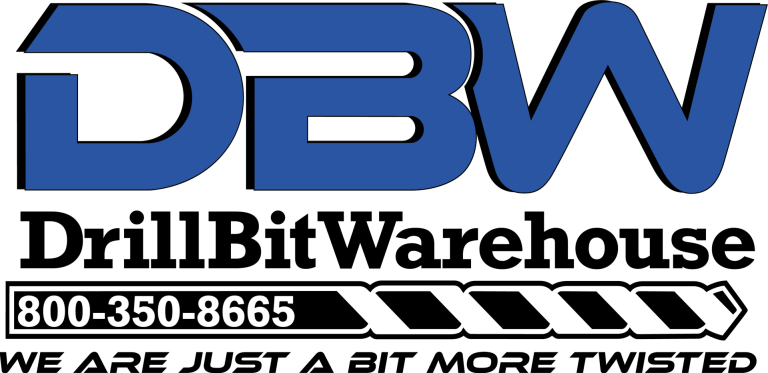How Temperature Affects Drill Bit Efficiency and Longevity

How Temperature Affects Drill Bit Efficiency and Longevity
 2025-05-27T17:43:33-08:00
2025-05-27T17:43:33-08:00
Temperature is a crucial factor in the performance and longevity of drill bits. As these tools grind and cut through various materials, friction generates significant heat. When not managed properly, this heat can compromise performance, damage the tools, or lead to early failure, hindering productivity and driving up costs.
Let’s explore how temperature affects drill bit efficiency, longevity, and performance, with ways to address these challenges effectively.
The Role of Heat in Drilling
Heat is an inevitable by-product of drilling operations. The friction between the drill bit and the drilled material during the cutting process creates heat. While minor heat generation is normal, excessive temperatures are problematic. They can soften the drill bit material and dull cutting edges, impacting the overall lifespan of the tool. Managing heat effectively leads to sustained performance and better tool integrity over time.
For example, a metal fabrication shop may notice frequent bit replacements while drilling stainless steel. They may determine that after switching to carbide-tipped drill bits and incorporating a water-based coolant system, they can reduce overheating and double the lifespan of their tools. This adjustment improves drilling precision and cuts down on tool replacement costs.
Material and Heat Resistance
The material composition of drill bits is vital in determining how well they handle heat. Manufacturers use high-speed steel (HSS), carbide, and diamond-tipped drill bits for their excellent heat resistance and durability.
However, even these high-quality materials can degrade under extreme temperatures, leading to warping, microcracks, or weakened structural integrity. Selecting the right material for your specific application and maintaining proper cooling prevents heat damage and keeps drill bits performing optimally.
The Impact of Material Hardness
Material hardness directly affects how much heat the drilling process generates. Harder materials like concrete or steel typically generate more heat during drilling. Drill bits must withstand increased resistance while maintaining their cutting edge in such applications. Using the right bit with proper cutting geometry and cooling setup prevents temperature spikes that can lead to tool failure.
For instance, a contractor can encounter overheating issues during a commercial construction project while drilling into reinforced concrete. The team can maintain consistent drilling speed and reduce bit wear by switching to a diamond-tipped drill bit with an integrated water-cooling system.
Additionally, selecting the correct spindle speed and feed rate is crucial when working with tough materials. Slower speeds with steady pressure manage heat more effectively and reduce the risk of glazing or edge deformation. Operators should also consider the coating of the drill bit. Titanium or cobalt coatings, for example, enhance heat resistance and overall durability.
Cutting Speed and Temperature
Cutting speed is another factor influencing drill bit temperatures. Higher speeds generate more friction and, by extension, more heat. While it might be tempting to work at higher speeds for faster results, this approach risks overheating, dulling the bit, and potentially damaging the drilled material.
On the other hand, working too slowly can lead to inefficiency. Finding the appropriate balance between cutting speed and heat management is essential for consistent performance.
Cooling Methods for Heat Control
Cooling systems are indispensable for controlling drill bit temperatures during operation. Without proper cooling, friction between the bit and the material can cause excessive heat buildup, leading to dull edges, reduced efficiency, and even tool failure. These systems often use water- or oil-based lubricants to reduce friction, prevent overheating, and extend the life of the tool.
For example, wet diamond core drill bits are specifically designed to operate with continuous cooling. In concrete or stone drilling applications, operators can use a steady stream of water to maintain optimal temperature and reduce dust.
Strategically applying coolant preserves the integrity of the drill bit and improves the accuracy and cleanliness of the hole. Whether you’re working in metal fabrication or masonry, integrating effective cooling systems into your drilling process is a smart, cost-saving move.
Tool Design and Heat Management
The design of a drill bit directly affects its ability to manage heat. Engineers design flutes, cutting edges, and tip shapes to manage heat and debris effectively. For instance, spiral flutes help expel debris and improve airflow, preventing heat buildup. Advanced designs account for temperature challenges. Opting for drill bits tailored to specific applications is a smart investment.
Prolonging Drill Bit Life
Maintaining consistent temperatures during drilling operations promotes tool longevity. Performing regular maintenance, like inspecting for wear and sharpening cutting edges, prevents heat-related issues.
Overusing dull drill bits leads to higher friction and temperatures, shortening their lifespan. Taking proactive steps to maintain your tools saves money and boosts productivity in the long term.
For example, a manufacturing facility implementing a weekly maintenance schedule to inspect and sharpen drill bits used in high-speed operations can increase tool lifespan. Plus, the company may see a noticeable drop in replacement costs and production delays.
Temperature’s Effect on Cutting Surfaces
High temperatures don’t just affect the body of the drill bit; they can also impact cutting surfaces. For example, the edges of hardened steel or carbide bits can lose their hardness under extreme heat, compromising their cutting ability. Avoid pushing your tools beyond their thermal limits to maintain performance and prevent costly replacements.
Environmental Factors and Heat Generation
Beyond operational methods, environmental conditions also impact temperature management. Outdoor drilling in hot climates or under direct sunlight can amplify heat challenges. On the flip side, colder conditions help dissipate heat more effectively. Adapting drilling techniques and cooling practices based on your environment ensures consistency and prevents unnecessary tool wear.
Transforming Challenges Into Advantages
By understanding how temperature affects drill bit performance and longevity, you can transform potential challenges into opportunities for improvement. Monitoring operational speeds, utilizing effective cooling systems, and selecting the right materials and designs safeguard your investment. Temperature management is vital for long-term success, whether drilling through steel, concrete, or softer materials.
Invest in the Right Tools and Techniques
Pairing these tools with proven techniques, such as applying appropriate cooling and maintaining proper cutting speeds, provides consistent, high-quality results. Good preparation enhances work efficiency while minimizing downtime caused by tool failure or inefficiency. Successful drilling requires more than brute force; it demands precision, technique, and an understanding of temperature’s role in the process.
Every degree of temperature control gives you an edge, whether you’re handling a small project or taking on large-scale industrial work. Purchase from Drill Bit Warehouse, where our drill bits meet our own employees’ quality standards. You can trust that our products are built for results. Take the right steps today to be ready for tomorrow’s challenges.




